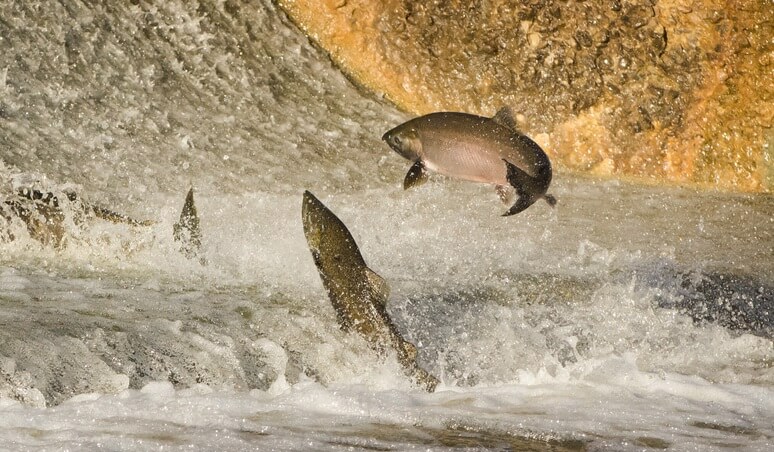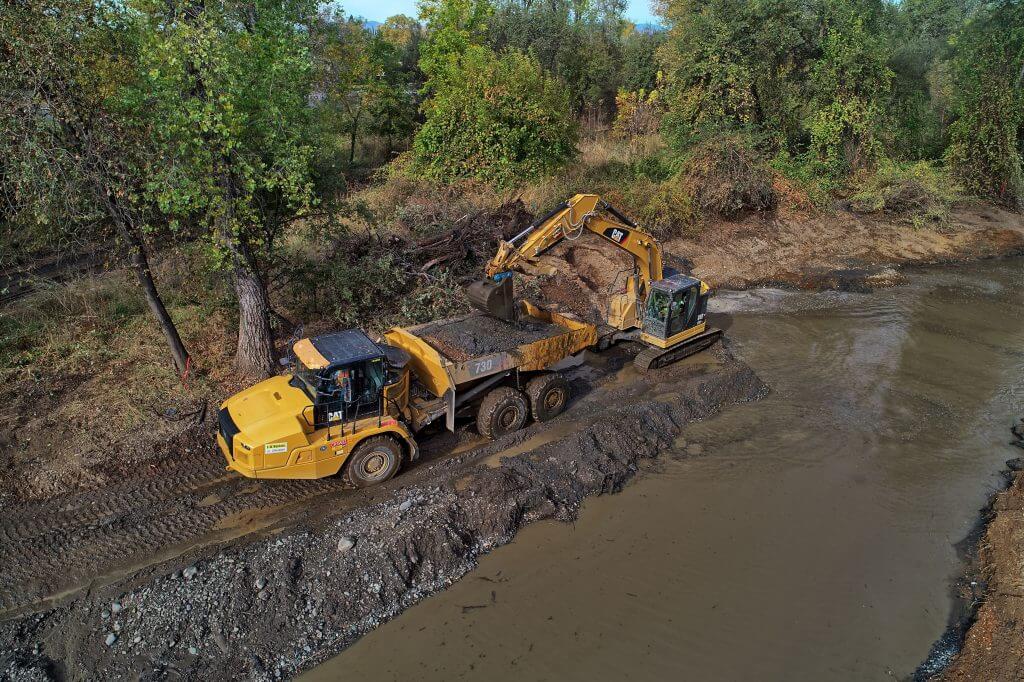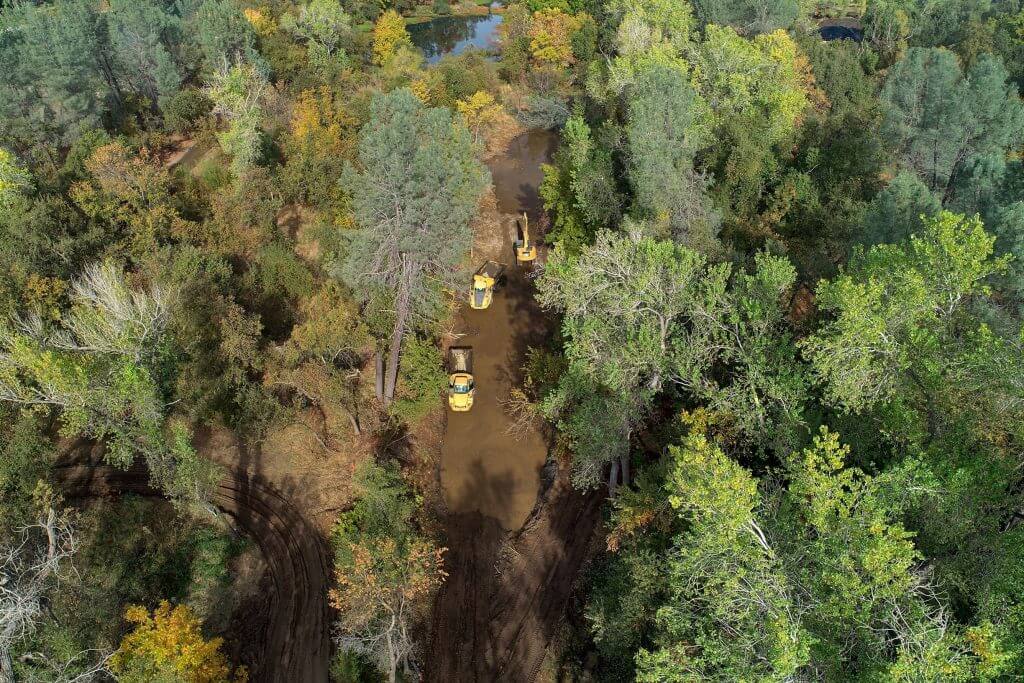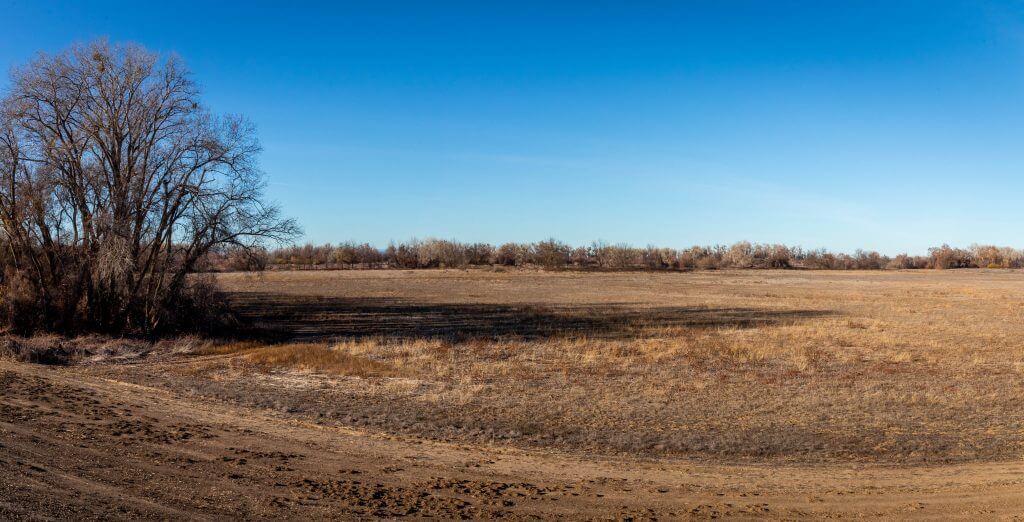
By Todd Manley
In the latter part of 2020, various actions were implemented in the Sacramento Valley to promote salmon recovery that point positive as we begin 2021. Even during a global pandemic, partners were working together on efforts to advance science to inform salmon recovery decisions and tangible projects to improve habitat for fish. Voluntary partnerships were formed or renewed to collaborate on actions ranging from individual projects to comprehensive programs to prioritize work and support project implementation. These partnerships included local landowners, water management entities, academic institutions, conservation organizations and state and federal agencies – all working together on common objectives to help salmon recovery. Importantly, this work occurred throughout the valley, in the upper, middle and lower reaches of the region’s rivers, to benefit all Chinook salmon freshwater life-cycle stages.
In December, Sacramento River Forum, Chico State Enterprises, California Department of Fish and Wildlife, U.S. Fish and Wildlife Service, River Partners and Sacramento River Settlement Contractors (which included the City of Redding, Glenn-Colusa Irrigation District, Reclamation District 108, Reclamation District 787, Reclamation District 1004, Reclamation District 1500, and the Tehama-Colusa Canal Authority) completed work on the most recent Sacramento River salmon recovery project. The South Cypress Island Side Channel Restoration Project provides 4.8 acres of much needed spawning and rearing habitat in the upper reach of the Sacramento River. This area is of critical importance because it is the primary spawning habitat for the endangered winter-run Chinook salmon. In addition, the first phase of the Hallwood Side Channel and Floodplain Restoration Project being implemented by Yuba Water Agency, U.S. Fish and Wildlife Service (USFWS), cbec eco engineering, South Yuba River Citizens League, Cramer Fish Sciences, Teichert and Western Aggregates on the Yuba River is almost completed and the River Partners’ Sacramento River Willow Bend Project Phase 1 is underway.


Important studies on the ability to use farm fields to grow food for juvenile salmon reached milestones towards the end of 2020. The pilot project developed by the California Rice Commission, UC Davis and CalTrout to grow juvenile salmon on winter-flooded rice fields showed promising results on the survival of these fish as they migrated out to the ocean. And, the Fish Food on Floodplain Farm Fields study continued to show the potential value of growing food on the fields that can be delivered to the regions rivers to feed juvenile fish migrating downstream to the ocean. A recent story in Inside Climate News shows this progress.
There also were activities regarding re-managed flows to benefit salmon in the region. In October, the Sacramento River Settlement Contractors and the Bureau of Reclamation coordinated fall water flow operations to benefit spawning Chinook salmon. Dr. Sarah Yarnell and Dr. Robert Lusardi continued to refine their work to describe the importance of functional flows to the environment and the development of the California Environmental Flows Framework (CEFF) to determine ecological flow criteria and guide the development of environmental flow recommendations. NCWA also advanced our work to define freshwater ecosystem budgets for salmon and other species.

In addition to participating in many of these collaborative efforts, state and federal agencies also made substantial financial investments in salmon recovery projects in the Sacramento Valley. In October, the California Natural Resources Agency invested proposition 68 funding in eight salmon recovery projects in the region to provide vital Chinook salmon spawning and rearing habitat, promote juvenile salmon outmigration by removing barriers and reactivate floodplains to provide food and shelter for juvenile fish. The Bureau of Reclamation announced that it would be investing an additional $40 million in grant funding for Sacramento Valley salmon recovery projects. These two funding awards will fund a portion of the salmon habitat and science work planned in the region for at least the next five years.
Salmon are anadromous fish, spending most of their life out in the ocean. Investments in habitat do not provide immediate results. At best, the impact of improvements can be measured three years after juvenile fish migrate to the ocean — in increased numbers of adult fish returning to spawn. It will take several of these returns to determine if the efforts are contributing to a positive trend in salmon populations. All of these actions now are investments in the promise of a better future. It is encouraging that the many Sacramento Valley Salmon Recovery Program partners are continuing to collaborate on efforts to help fish in the region, focusing on the time ahead and working today to develop habitat for generations of Chinook salmon to come.




Please consider what could be the Riverview Side Channel Project at Riverview Golf and Country Club in Redding. Almost half a mile of already connected flowing hydrology with heavy equipment access needs the same kind of expertise and effort as South Cypress. The existing slough was created in the late 1940s during construction of a levee to protect the golf course.
Thank you for all you have achieved to help salmon recovery. There is no question we can and should support this resource so plundered by our previously single focused effort at dam building.